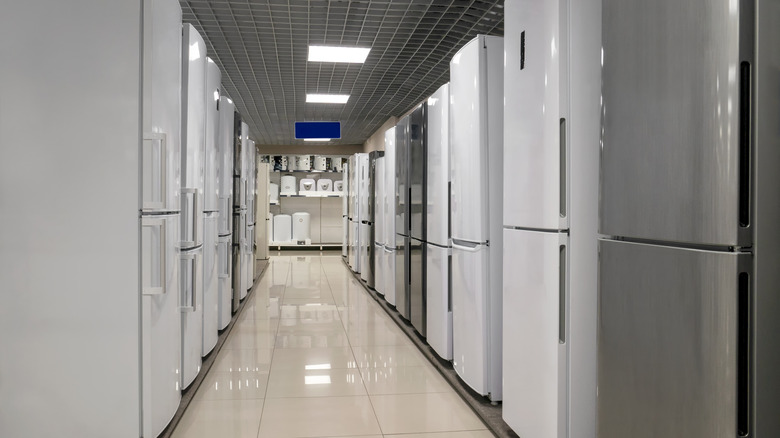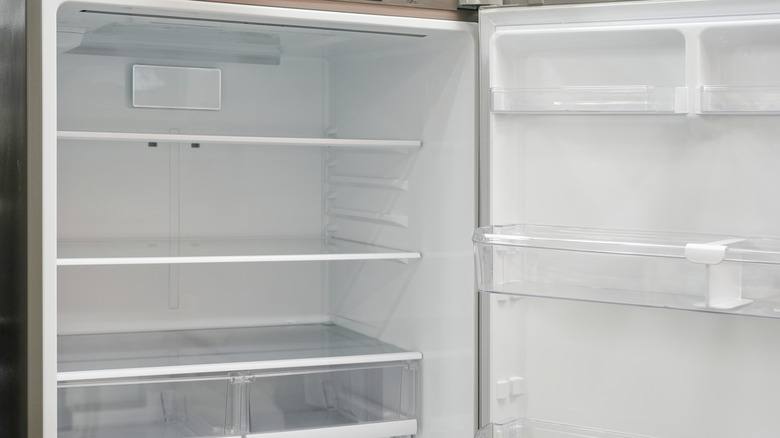How To Avoid Buying The Wrong Fridge For The Way You Really Cook
A new fridge is a big investment. They run from $500 for the cheapie models to more than $10,000 for the high-end ones, so you'll want to shop wisely. You've probably checked out design-focused tips for selecting the best fridge size, color, and look for your space, but it's not a purely aesthetic appliance — your fridge needs to serve your cooking needs, too.
First, consider what features are a must. Most fridges come with at least two crisper drawers, but some feature extra drawers for increased produce storage. Certain models include temperature adjustments for different drawers, giving you precise control over your food storage. These can get pricey (at least over $1,500), but they can be worth it if fresh fruits and veggies are spoiling quickly in your current fridge.
Are you a regular sipper of cocktails, smoothies, or both? Put an ice maker on your "must" list. Do you keep canned drinks like beer on hand or retain an armada of sauces for garnishing your meals? Proper door shelf storage should be a necessity. In this case, make sure there's not too large of a gap under the outer barrier — you're probably familiar with the annoyance of watching your items tumble every time you open the door. Some new fridges even have touchscreen computers with calendars (ideal for meal-prepping) and internet access so that you can pull up recipes while you're cooking. These features can really crank the price up but can increase kitchen efficiency and synchronicity.
Finding the right fridge size and layout
Outside of amenities, consider how your fridge's size and layout correspond with your kitchen habits. For example, if you regularly store in-process recipes and leftovers on large sheet pans or in baking dishes, make sure your fridge has either enough depth or width to hold the cookware. You might run into space issues with a side-by-side fridge-freezer design, but a top or bottom-freezer model offers plenty of shelf space for larger pans.
Almost all fridge models these days have adjustable shelves, but you will want to make sure that your fridge's adjustment settings suit your needs. If you're on the fridgescaping trend or make use of a lot of reusable storage containers, ensure that they'll stack without compromising the number of shelves you can fit (or use chopsticks as DIY shelving.) Some avid home cooks even recommend splurging on a commercial-grade fridge if you think you'll need the power and capacity.
Some fridges come with already-installed organizer drawers in the freezer. For busy bees that rely on frozen food hacks (either store-bought or meal-prepped,) this design might be a game changer. These are some of the common fridge considerations for home chefs, but take stock of everything you might need or want — they already have fridges with computers on them, so the sky really might be the limit.

